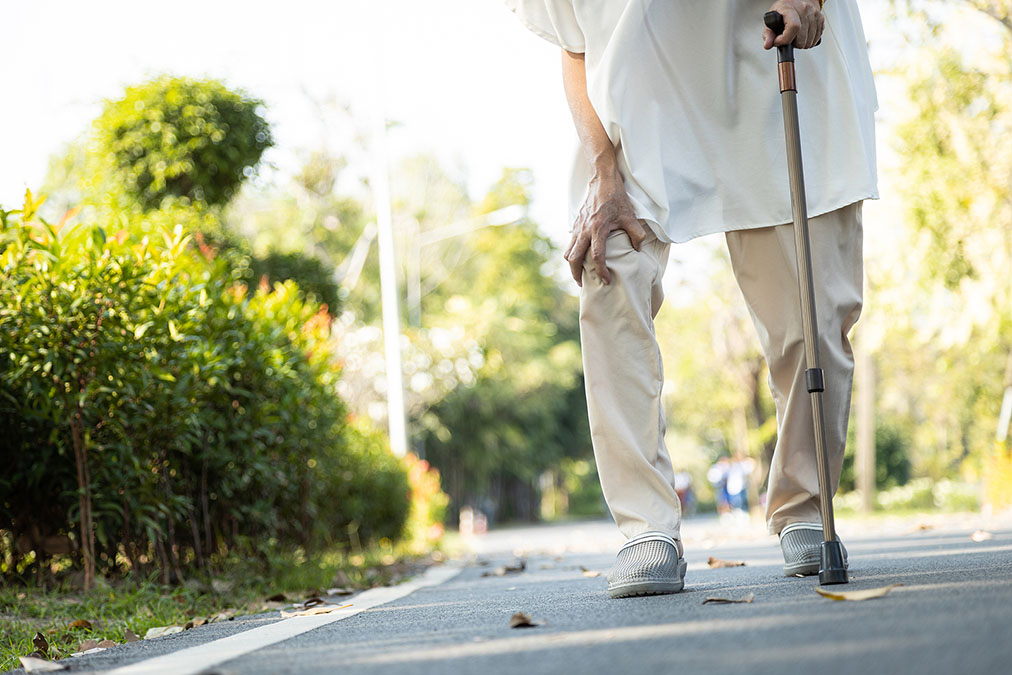 We know that osteoporosis causes bones to weaken.
We know that osteoporosis causes bones to weaken.
We also know that if you suffer from osteoporosis, you’re at critical risk of breaking bones.
There are many factors that increase the risk of people with osteoporosis breaking bones.
A new study from BMC Women’s Health identified seven factors that add to the risk of broken bones in people with osteoporosis.
Many of these factors are easily avoidable.
The researchers obtained health information about 2,478 postmenopausal osteoporosis patients between 2007 and 2016.
All of the patients were women above age 50.
1,239 of them had never had bone fractures; the other 1,239 had suffered fractures. Of those who had suffered fractures, 1,008 had suffered only one, while the other 231 had suffered multiple fractures of the same bone.
When they compared the group of women with no fractures to the groups of women with one or two fractures, they made the following discoveries.
-
1. The women with one or two fractures were older on average than the women with no fractures.
2. The women in the unfractured group had the highest bone mineral density, followed by those in the single-fracture group, with those in the multiple-fracture group having the lowest bone mineral density scores.
3. Women in both fracture groups had lower osteocalcin in their blood than the unfractured group did, and those in the single-fracture group had the lowest scores of all. Osteocalcin is a protein that builds and maintains bones.
4. Women in both the single-fracture and multiple-fracture groups were more likely to have diabetes than women in the unfractured group did, with those in the multiple-fracture group having the highest risk. Those with diabetes also had the lowest bone mineral density and osteocalcin.
5. Those with cardiovascular disease were most likely to be in the multiple-fracture group and to have the lowest bone mineral density and osteocalcin.
6. Those with chronic liver and kidney diseases were most likely to suffer a first bone fracture.
7. Those who were of advanced age, were overweight, had lower lumbar spinal damage, and had low total hip mineral density were more likely to have single or multiple fractures.
While we cannot do anything about our age, many of the other risk factors for fractures in this list are under our control.
Thousands of readers have reversed osteoporosis using the simple, natural steps explained here…

 Overcoming IBD
Overcoming IBD Multiple Sclerosis
Multiple Sclerosis Banishing Bronchitis
Banishing Bronchitis Gum Disease Gone
Gum Disease Gone Overcoming Onychomycosis
Overcoming Onychomycosis Neuropathy No More
Neuropathy No More The Prostate Protocol
The Prostate Protocol Brain Booster
Brain Booster
 Ironbound
Ironbound
 Solution for Shingles
Solution for Shingles
 The Bone Density Solution
The Bone Density Solution
 The Ultimate Healing Protocol
The Ultimate Healing Protocol
 The Parkinson's Protocol
The Parkinson's Protocol
 The Chronic Kidney Disease Solution
The Chronic Kidney Disease Solution
 Overthrowing Anxiety
Overthrowing Anxiety The Fatty Liver Solution
The Fatty Liver Solution The Hypothyroidism Solution
The Hypothyroidism Solution
 The End of Gout
The End of Gout The Blood Pressure Program
The Blood Pressure Program
 The Oxigized Cholesterol Strategy
The Oxigized Cholesterol Strategy
 Stop Snoring And Sleep Apnea Program
Stop Snoring And Sleep Apnea Program
 The Arthritis Strategy
The Arthritis Strategy The Vertigo & Dizziness Program
The Vertigo & Dizziness Program The 3-Step Diabetes Strategy
The 3-Step Diabetes Strategy Hemorrhoids Healing Protocol
Hemorrhoids Healing Protocol The Erectile Dysfunction Master
The Erectile Dysfunction Master Weight Loss Breeze
Weight Loss Breeze The IBS Program
The IBS Program The Insomnia Program
The Insomnia Program The Migraine and Headache Program
The Migraine and Headache Program The Neck Pain Solution
The Neck Pain Solution The Menopause Solution
The Menopause Solution The Ejaculation Master
The Ejaculation Master The TMJ Solution
The TMJ Solution The Acid Reflux Solution
The Acid Reflux Solution The Fibromyalgia Solution
The Fibromyalgia Solution The Psoriasis Strategy
The Psoriasis Strategy